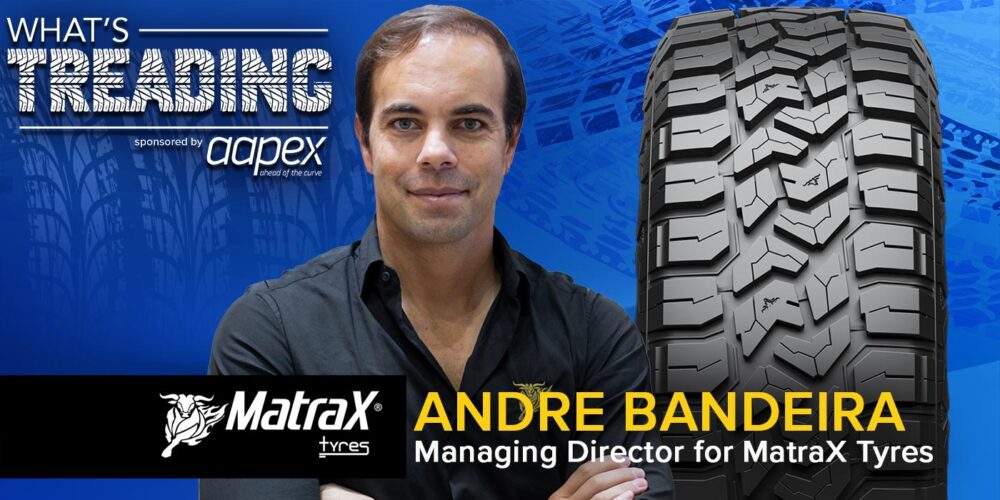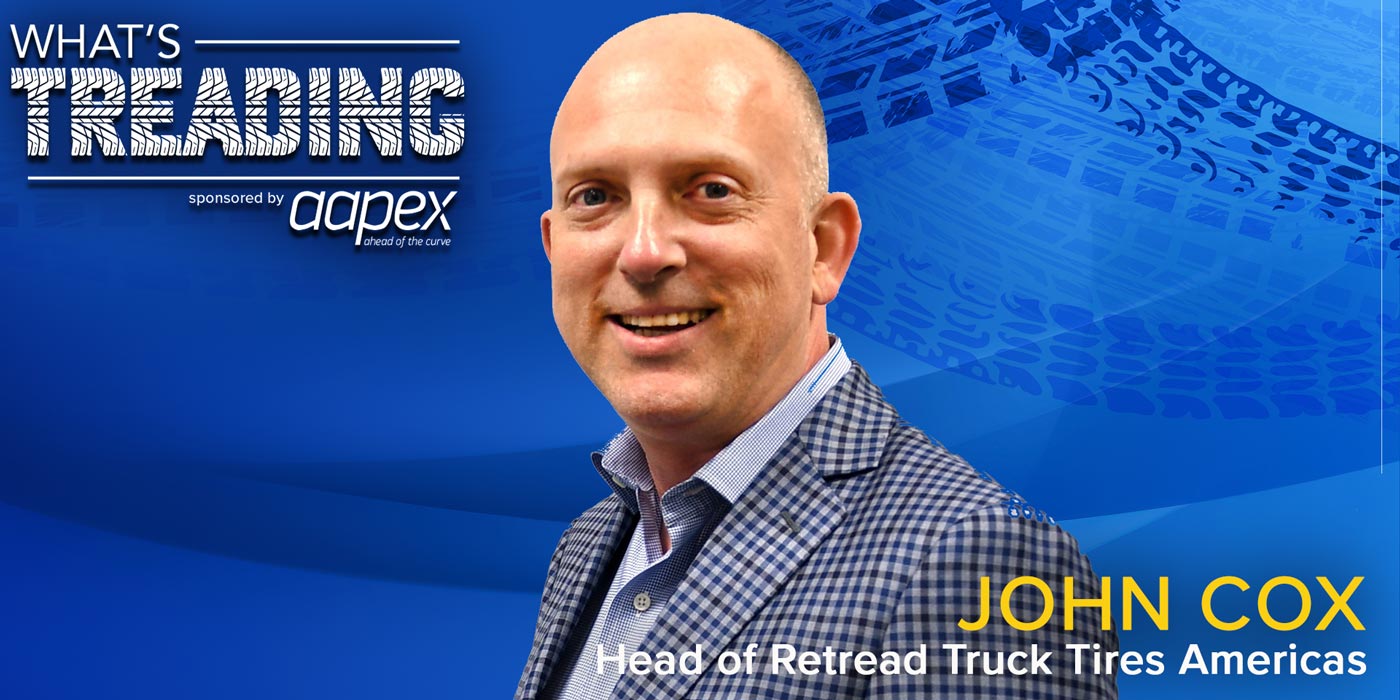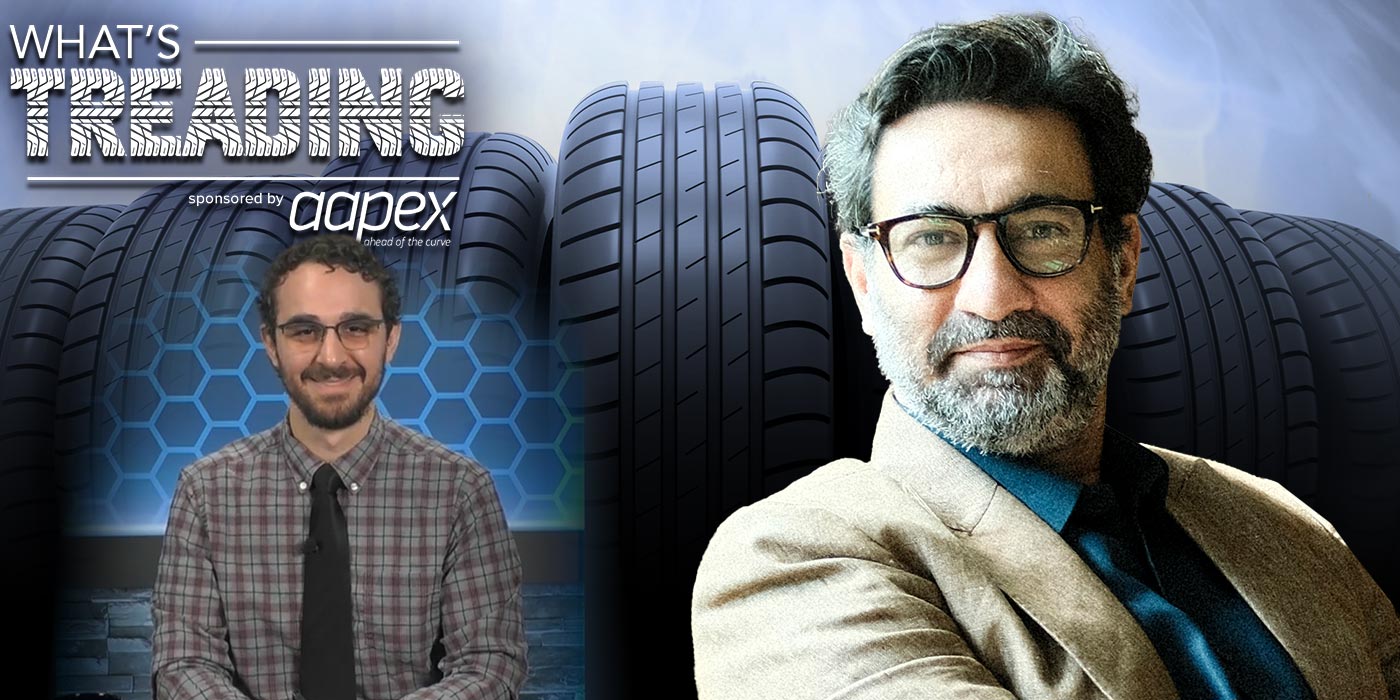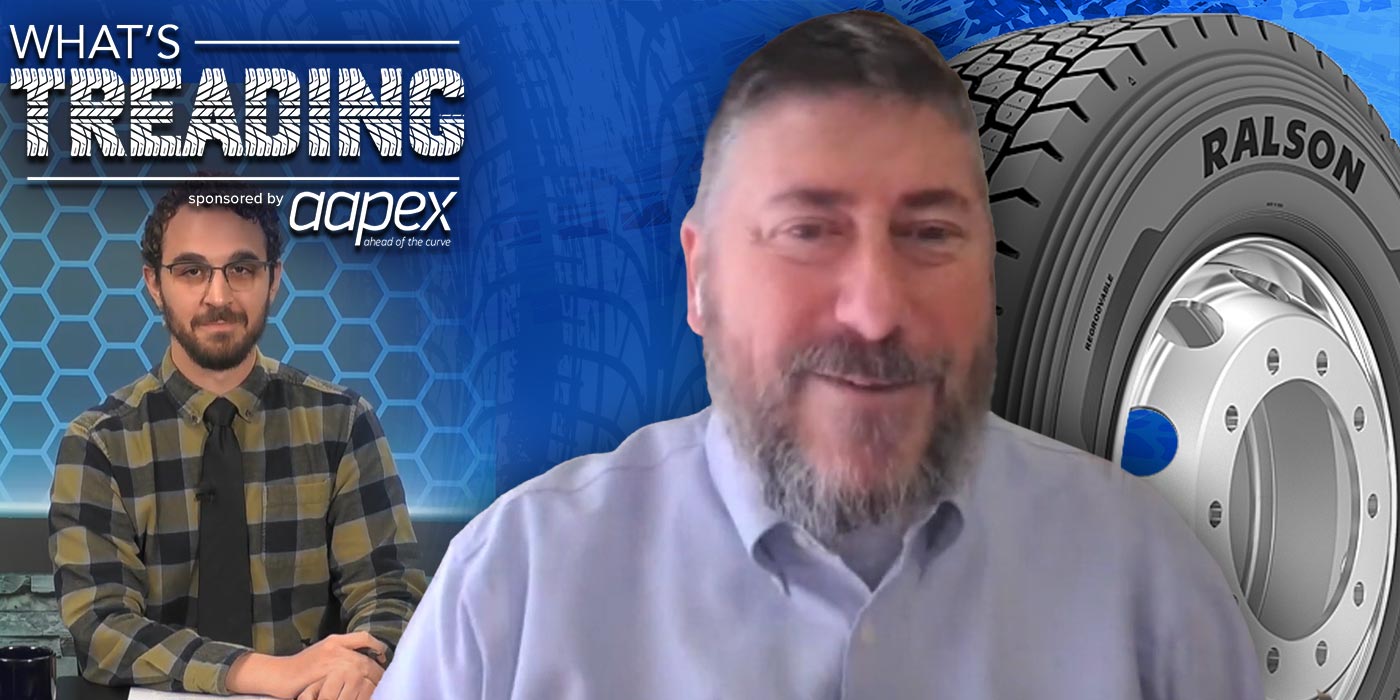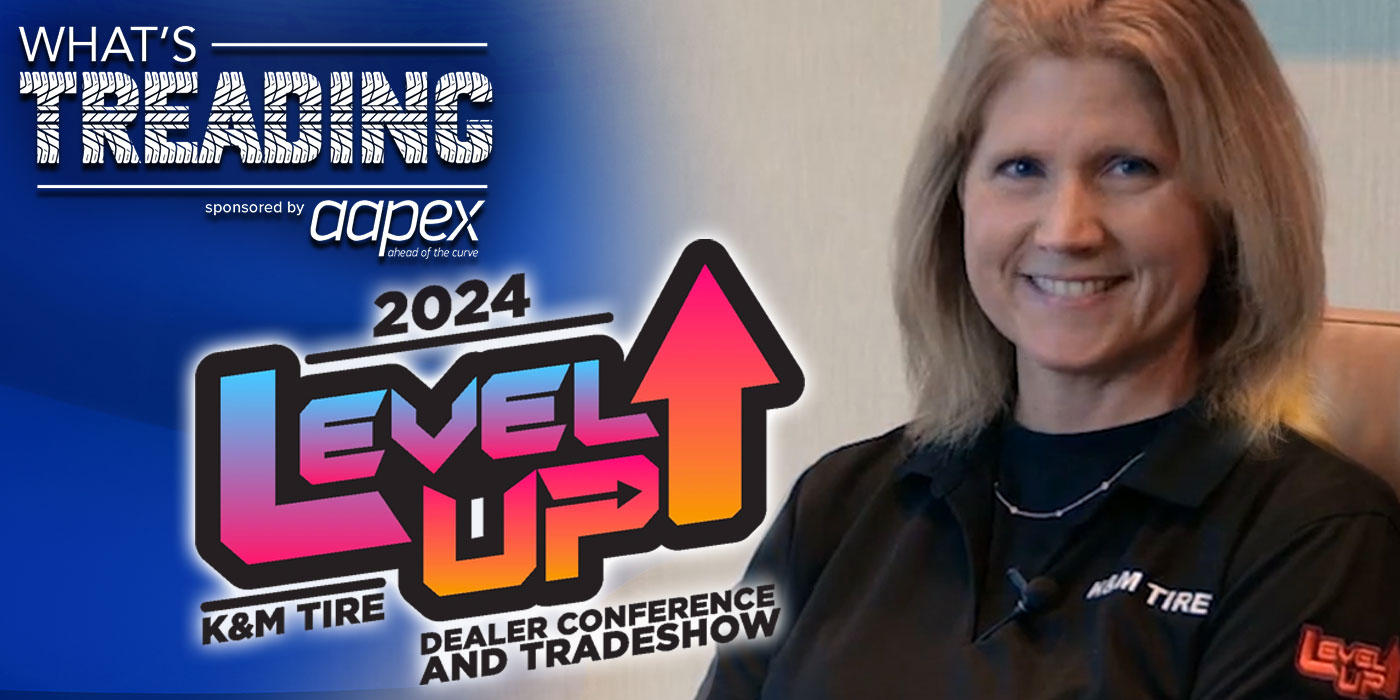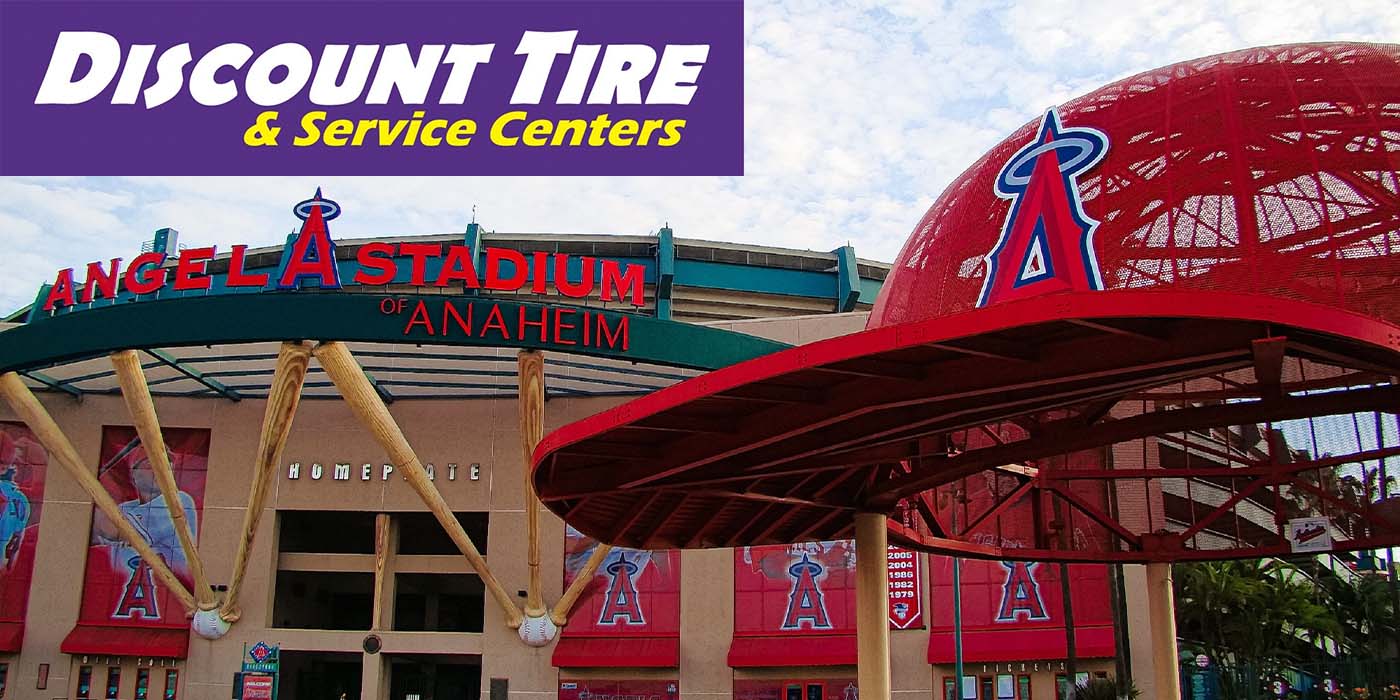When your Average Joe or Jane hears the word Continental, what do think first comes to mind? A hotel breakfast? An airline? Plate tectonics? In large part thanks to Brian Beierwaltes, senior manager of marketing at Continental, many consumers out there first turn to the tires manufactured by a global tire brand.
Every tire manufacturer has its own unique marketing strategy. So, how does a Continental marketing executive keep tires top of mind?
“From the tire side, I really think we leverage our performance side of things and the value that we bring to our consumers, creating great products that ultimately showcase themselves and how they help people on a daily basis when they’re driving,” Beierwaltes says.
On this episode of What’s Treading with Tire Review, we pick Beierwaltes’s brain about creating a successful marketing campaign for an industry giant; what consumers care most about with their tire purchases today; and what tools Continental gives tire dealers to help them close the next sale.
Want more What’s Treading? Click here.
Here’s a transcript of the show:
David Sickels: Hello and welcome to What’s Treading with Tire Review. My name is David and I’m coming to you today from the Continental Garage Studio here at Babcox Media. I am joined by Brian Beierwaltes. He is the senior manager of marketing at Continental. Brian, thanks for flying in today.
Brian Beierwaltes: Thanks for having me.
David Sickels: Where’d you come from?
Brian Beierwaltes: We came from Charlotte, North Carolina, which is where we’re based. Fort Mill, South Carolina actually is technically where our office is, but it’s right on the border, nice and close and get to cross over every day on the way to work.
David Sickels: Oh, perfect. Well, thanks for coming in. I really appreciate your time here. So Continental is obviously a well-respected name in the whole tire landscape. When we’re talking about marketing that sort of brand, how do you leverage your good name when you’re looking at the entirety of your marketing?
Brian Beierwaltes: It’s interesting because Continental, as a global brand, is gigantic. We’ve been around for over 150 years. In the US, nowhere near that. The brand is fairly new overall, so we’re able to leverage it from a global perspective to a certain degree on the tire side, but in the US it’s still fairly known and it also has a generic name to it, to a certain degree. Airline, breakfast.
But from the tire side of it, I really think we leverage our performance side of things and the value that we bring to our consumers, creating great products that ultimately showcase themselves and how they help people on a daily basis when they’re driving.
David Sickels: Yeah, yeah. Makes a lot of sense. Continental traditionally has put a lot of its marketing time and effort into sponsorships, whether it’s MLSs or different college sports, things like that. Recently you have signed a contract with the WNBA. What makes that a good partner, in your eyes, for Continental?
Brian Beierwaltes: Well, it’s actually two things. So one is that the WNBA was a partnership that came to life together with Discount Tire. So we became the official tire of the WNBA and Discount Tire became the official retailer of the WNBA. So it’s a chance to really be able to bring both of our brands together to showcase them. It’s one of the fastest-growing women’s sports in the US, and so it really gives us a chance. Women make up a large portion of the tire-buying industry.
So it’s a chance to be able to target that audience, connect with that audience, showcase our products, and really be able to bring the Continental name out to them. In addition, it dovetails really well with what we do in college basketball. So college basketball has been a big partnership to ours for quite a while. So bringing those together along with the partnership with Discount Tire just made a whole lot of sense. And so together we’ve put together the partnership with them. Launched it very, very recently, so you’ll start to see Continental and Discount Tire featured on the floor, on the boards, in TV commercials, in content. So we’ll be able to really make a good run at it and looking forward to seeing what the results are.
David Sickels: And when you start a partnership like that, how does that begin? How are the seeds planted? Do you typically go to them and say, “Hey, we have this idea,” or is it the other way around? They come to you and say, “Hey, I think this would be great.”
Brian Beierwaltes: Honestly, it depends. I know that’s kind of an odd answer. Most of the time when we’re looking at sponsorships, we’re saying, “All right, who do we want to go after? Who do we want to target? How do we want to connect with this consumer?” And our approach is always, we always say it’s a rifle approach versus a shotgun approach. We don’t go out and just buy mass media and try and plaster the Continental name all over. We want to go in and make a real connection with that consumer. And we look at it from a research-based approach saying, “Where are we going to find the right type of consumer who’s the Continental consumer? How do we showcase our brand? How do we make sure that it fits with who we are and who we want to partner with from a consumer perspective?”
And so it kind of fits both ways. We do a lot of evaluation upfront from that aspect. Sometimes we get sponsorships that happen to come to us that just make sense. So it’s a bit of both, and I would say on our larger sponsorships like college basketball and Major League Soccer and WNBA, it’s more us approaching them after we’ve done our homework on it. On a lot of other types of sponsorships that might be maybe a little smaller scale, some of those are approached and come to us.
David Sickels: Sure. You had mentioned the rifle versus the shotgun, which I think is a fantastic segue to my next question. Technology today, the way that you’re leveraging technology as a marketer today has got to be insane. I mean, technology evolves so quickly and you’re trying to target your audience, but they’re on so many different platforms, doing so many different things, viewing media in so many different ways. How do you effectively use technology today to market to your audience?
Brian Beierwaltes: The marketing’s really evolved over the years. In my 20-plus years of being in the marketing industry, it used to be the old days of I could buy TV, print, radio, and I’d go out with the mass media side of it, and that worked. And there actually used to be mathematical equations that they would create that said, “I would spend this much in each of these different areas and it would have X amount of return as a result of it.”
Nowadays, with the fragmentation of media, the use of technology, the growth of the internet, it’s become much, much more difficult because we’re inundated with messages consistently. I mean, it’s hundreds and hundreds of messages a day. So I think the key thing is being able to utilize technology in ways that are targeting the right consumers at the right moment with a message that is relevant to them.
You ultimately have to be putting the consumer first. And I think that’s the neatest thing about this, is you can become so much more precise. Especially within the digital landscape, but now that’s extending into the television side of things where messaging can constantly change. And I think that it’s an exciting time to be in it. It’s also something that you have to be constantly staying up on.
In my position, am I an expert in all forms of technology and marketing? Absolutely not. That’s why we have an entire team that specializes in different areas in different agencies that we’re working with, and that’s how we really stay on top of things. And at the end of the day, what we’re trying to do is we’re trying to put feet in stores for our dealers. We don’t own our own retail, and so I want to try and help our dealers be as successful as possible from both the Continental and the General Tire perspective.
So for me, it’s great if I drive someone to our website, but at the end of the day, that doesn’t help me nor our dealer. So how do I take that person and how do I have that consumer in that right moment, which is typically a seven to nine-day window that someone realizes they need to purchase tires, and hit them at that right moment, be able to explain to them why Continental’s the smart choice in tires, and be able to get them to the dealer so that they can make the right purchase for their vehicle.
David Sickels: So do any marketing campaigns or strategies come to mind when it comes to using technology to get that precision that you’re looking for? Can you give us any examples?
Brian Beierwaltes: Yeah. In today’s day and age, things are so connected. So if a consumer is sitting there and usually, they’ll start off in Google. They’ll type something into Google, “Tires near me,” whatever that is. “Tires by Ford F150,” that’s where you begin. Once you start in there, now you’ve become a cookie person, or used to be cookies. Now you’re tagged, and now I can follow you to different places.
So depending upon what your search history is, we can do behavioral targeting where you tend to spend time on the internet. We can do geotargeting based on where you’re located, either with your mobile device or through IP addresses. So I can follow a consumer to multiple places, serve them up in different messages based on what their behaviors are, and ultimately then I can geotarget them in terms of driving them to the location from a dealer perspective. Here’s your specific dealer, or here’s your two or three dealers that are within a five-mile radius of where you are that sell our product, and this is the product that would be the right product for you if you’ve completed a tire selector and all that.
So things are much, much more connected now, which is really neat. It’s really great from a marketing perspective, but I also think it’s good from the consumer aspect because now I’m not getting inundated with things that aren’t relevant to me.
David Sickels: Absolutely.
Brian Beierwaltes: And we all see this where you can opt into different things. And I think there’s still some ways to go in terms of how it’s all monitored and managed and all of that, but it’s able to really create a better experience, I think, for the consumer and ultimately help them in their journey.
David Sickels: So, speaking of consumers, a lot of consumers are starting to go toward, “Hey, I care about sustainability. I care about where different components are coming from,” things like that. How is that affecting your business as far as marketing is concerned?
Brian Beierwaltes: Sustainability is actually a really big topic within our company. Our company’s made a commitment to be 100% carbon-neutral by 2050. And that’s not just within the tire part of our company, it’s also on the automotive side of it. So this is something that we’re continuously investing in new technologies, new ways of manufacturing tires. So recently we came out with the UltraContact NXT, which is sold over in Europe right now. It’s not available in the United States, but it’s 64% sustainable. And that’s the direction that we’re headed. How do we do things and how do we provide products that are able to provide the performance that our customers want at the price point that they want, but are also doing the right things from a global perspective and being a better global partner on that side?
So on the marketing side of it, it’s more about a belief within our company and a commitment that we’ve made, whether that’s in our manufacturing side of things, whether that’s in the sourcing of materials and the vendors that we work with. So it’s really become a big part of it, and I think it’s more than others may be doing. It is very easy to sit there and say, “We’re going to go be carbon-neutral and we’re just going to go plant a whole bunch of trees, and that’s going to offset our carbon impact.” And I think for us it’s more about, how do we integrate it into who we are? And it’s one of our key metrics that we’re actually evaluated on from a global aspect every year, is our path towards that vision in 2050 of being carbon-neutral,
David Sickels: You say 64% sustainable for that tire. What does that mean exactly? Does it mean recycled material?
Brian Beierwaltes: Yeah, it’s the use of all kinds of different materials that are going into the rubber products within it, within the development of our belts, all of that. So we’re looking at using recycled steel within it. We’re using recycled plastic bottles in ways that’s feeding into our manufacturing process. There are rice husks that are being used in it.
There are a lot of different things. One of the things that we’re continuing to still try and figure out how we industrialize is the use of dandelions. So there are dandelions that are able to essentially create a synthetic rubber out of that, and it works just as well. And we’ve been talking about it for a number of years, but if you figure the amount of rubber that’s needed for that or the amount of product that comes from the dandelions that are needed for that to produce tires is fairly significant.
So we need to be able to figure out, how do we create fields and fields of these things? How do we process them? Because rubber as a natural ingredient is scarce and it’s defined in a certain belt within the globe. And so that’s where we continue to look at is, what other ways can we do this? And we’ve got hundreds and hundreds of engineers and chemists that are looking at how do we use different materials to be able to not make a sacrifice to the product for a portion of it, but also do it in the best way for the earth.
David Sickels: Yeah, and for a lot of consumers, that’s going to make a big difference.
Brian Beierwaltes: Absolutely.
David Sickels: Let’s talk about selling product. So do you have any expectations as far as what you see for the second half of this year? Any sizes or fitments that you think are going to be in particularly high demand?
Brian Beierwaltes: Yeah, I would say that the beginning of this year, if you look at it, year over year has been a challenge. It’s been a little soft compared, but if you look at coming out of the pandemic, the industry, what people thought was going to be down for so long, really hockey-sticked up very quickly. And there were a lot of manufacturers, including ourselves, had to close plants for a while. So there’s been a catch-up for a while.
But I would say right now with the economic impacts that we have of what’s occurring from an inflation perspective in other areas, the industry, I think people are starting to think about and be more conscious about the decisions that they’re making. And so there are things that we’re doing to try and help consumers, whether it’s from a promotion side of it, whether it’s through credit card offerings, just to help them be able to make the purchase because this is a purchase that’s important. It’s the one thing that connects you to the road.
You have a multiple thousand-pound vehicle and everyone thinks about the performance of the vehicle and all that. There are only four little contact patches on that, and the importance of your tires. So I think for us, we want to make sure that we can continue to help that consumer on that side. We don’t anticipate it to be this huge growth curve within the second half of things, but I think it’s the industry in itself it’s a necessity product from that.
David Sickels: Oh yeah, 100%. And a lot of consumers, they’re blown away at how the performance of their vehicle is affected by the tires that they choose for that vehicle.
Brian Beierwaltes: Absolutely.
David Sickels: Like you said, it’s those four points that are connecting you to the road, and so your tread pattern or whatever it might be going into that tire, it can make a huge difference.
Brian Beierwaltes: Yeah. And I think that’s where we start with the development of all of our products is what is most important to the consumer. And in the development process, there’s give and take in different characteristics.
David Sickels: Of course.
Brian Beierwaltes: So when we look at our products, we’re saying, all right, within this segment, whether it’s a passenger car segment, a light truck segment, performance segment, ultra-performance segment, what does the consumer want out of that? And then how do we develop towards that? How do we make sure we’re using the right compounds for it, the construction of it? So that’s an important piece of it.
And I think the one thing that we continue to see is tire sizes continue to get bigger. Rim diameters continue to get bigger, and I think that’s a trend you’re going to continue to see. Even with the introduction of more and more electric vehicles, that’s the way the industry’s moving. And so you had asked about where you see in growth segments and stuff, larger rim diameters, those types of things are segments that continue to be popular and grow for us.
I would say I think you’re going to see growth within the EV segment. From a vehicle perspective, there’s the question about EVs and whether they require specific tires or not, but I think as more and more of the alternative to internal combustion engine vehicles come out, you’re going to see growth within those segments too.
David Sickels: Yeah. As far as EVs go, it’s all about application. I mean, it’s what you want your vehicle to perform. If you’re looking for high warranty or a lot of tread life or something, you can always be directed toward the tire that is going to give you what you need whether or not it has that EV designation.
Brian Beierwaltes: Yeah, I think the reality is that in the end, it needs to be looked at. What’s the consumer need and what’s the application for it? The reality is EVs are not terribly different than internal combustion engines. With the torque management systems that are on EVs now, there’s a lot of discussion around torque, weight, noise, and those are really the three key things that make EVs unique.
When you look at it from a torque management perspective, the torque converters and the torque management systems in the EVs are working extremely well in helping manage that. When you think about it from a weight perspective, yes, batteries do way more. As long as you’re observing the load capacities of the tires with the vehicles, you’re well within the performance characteristics that you need. And the last part of it is the noise, and without the sound of the combustion engine, tires tend to be more noticeable.
And so we spend a lot of time in terms of the acoustic and comfort enhancements that we put into our tires. We learn a lot from the EV side of it on both our OE applications with tires as well as the development that we’re doing well beyond the tire segment in terms of all the electronics that are going into it. So Continental itself, from a consumer aspect, is known as a tire manufacturer, but we are a gigantic automotive supplier.
David Sickels: Sure.
Brian Beierwaltes: I think that gives us an edge over any other tire manufacturers to have the insight of what’s going into electronic vehicles and being the developer of a lot of those electronics that go into it, as well as being very much a partner on the EV application side of it. So in our opinion, there are tires that are developed from the OE side of it that are typically looking at it from a rolling resistance perspective and a mileage and range perspective. And that’s what comes on the car. If that is what is most important to you, the OE application is the right solution. If you’re looking at the performance side of it and you’re looking at wet braking or wet traction, dry traction, you may be trading off in certain areas, and that’s the decision that a consumer has to make.
David Sickels: Absolutely.
Brian Beierwaltes: And it’s no different than today’s day and age with an internal combustion engine. We make those trade-offs, we make those decisions about what is the right application for us, and I think we’ve been able to, with all of our products. All of our products are EV-ready. They are ready to be put onto an EV at any point in time, whether it’s a true contact or a peer contact, or a drain contact.
All of those will be introducing, over time, a stamp that’ll say “EV check mark” on the side of all of our Continental products as they’re rolled out and new sizes are added and all of that, that’ll designate it as EV ready. But I think EV right now is a hot topic, and eventually, it’ll turn into similar to what we are right now with hybrids and everything else where as long as the vehicle is managed from a load range perspective, a tire’s going to become a tire and it’s going to become about what the consumer wants and what the consumer is desiring from a performance aspect.
David Sickels: To that point, I mean, that’s why the role of the tire dealer is so important because a lot of times the consumer might not even know what they want. And so they come in and they’re asking, “Okay, this is my car. Tell me what I need. This is what I do with it.”
Brian Beierwaltes: Yeah. I think in today’s day and age with the amount of information that’s available, consumers are coming in a little more educated than they were before and they’re doing a little bit more research, but that doesn’t necessarily detract from the role that the dealer plays within it. So it’s much easier for me to be able to get a sense of, all right, what are different vehicles or what are different fitments or brands that are the right fitment for our vehicle? As well as, what are the reviews on them? How do I get a sense of becoming an educated consumer walking in?
We call those “trust but verify” consumers, where they know that they want to be educated, they want to learn. They don’t want to just walk in and say, “Hey, just put on whatever you want.” So they’re doing their research to come in to at least be knowledgeable to a certain degree, but the dealer absolutely does play a role within it in terms of helping educate them further, helping understand, all right, which is the right fitment, which ones come in our sizes? What are the warranty aspects that go with it? What’s the engineering that goes behind it, and all the testing that goes behind it? And so I think the dealer plays a critical role, but I think there’s also now more of an acceptance of being knowledgeable walking into that dealer than there was before.
David Sickels: Definitely. Definitely. I want to back up just for a second because you’ve mentioned the Continental credit card as being a helpful tool for dealers to offer consumers. What else comes to mind when it comes to tools that dealers can use at their disposal to help guide consumers who are coming into their shop?
Brian Beierwaltes: Yeah, I think our Continental credit card is definitely one. It offers 6.0% interest for qualified customers, and that’s at any point in time. And then the other things that we offer, we have consumer promotions that go on all year long. And so we have not only the consumer promotions, but then if you purchase it on the credit card, there’s an additional promotion rebate that goes with that. So like I said, between those two pieces, there are savings from a consumer’s perspective that can definitely help them.
I think the other thing too is our total confidence plan is a piece that… It’s not really a warranty. It’s a comprehensive thing that we’re bringing to consumers, whether it’s bringing road hazard, trip insurance, trip interruption insurance, we’ve got our mileage warranty that’s part of it. We have roadside assistance that’s part of it. So for us, we can make a great product and we know we can make a great product.
The thing that we’re always looking to do is how do we add value beyond just the product? And that’s really where the total confidence plan comes into play. And it’s the industry-leading “warranty” that comes with the tire purchase, and we’re consistently looking to enhance that to make sure that it continues to add value. And from a dealer’s perspective, it also helps them in the selling process to say, “Hey, here’s the other added benefits that you get beyond the tire that you’re putting on your vehicle.”
David Sickels: Very cool. Well, Brian, thank you so much for sitting down with me today. This was super fun. I learned a lot. Thanks for coming in.
Brian Beierwaltes: Yeah, absolutely. Thank you.
David Sickels: Thanks for joining us. We’ll catch you next time.





